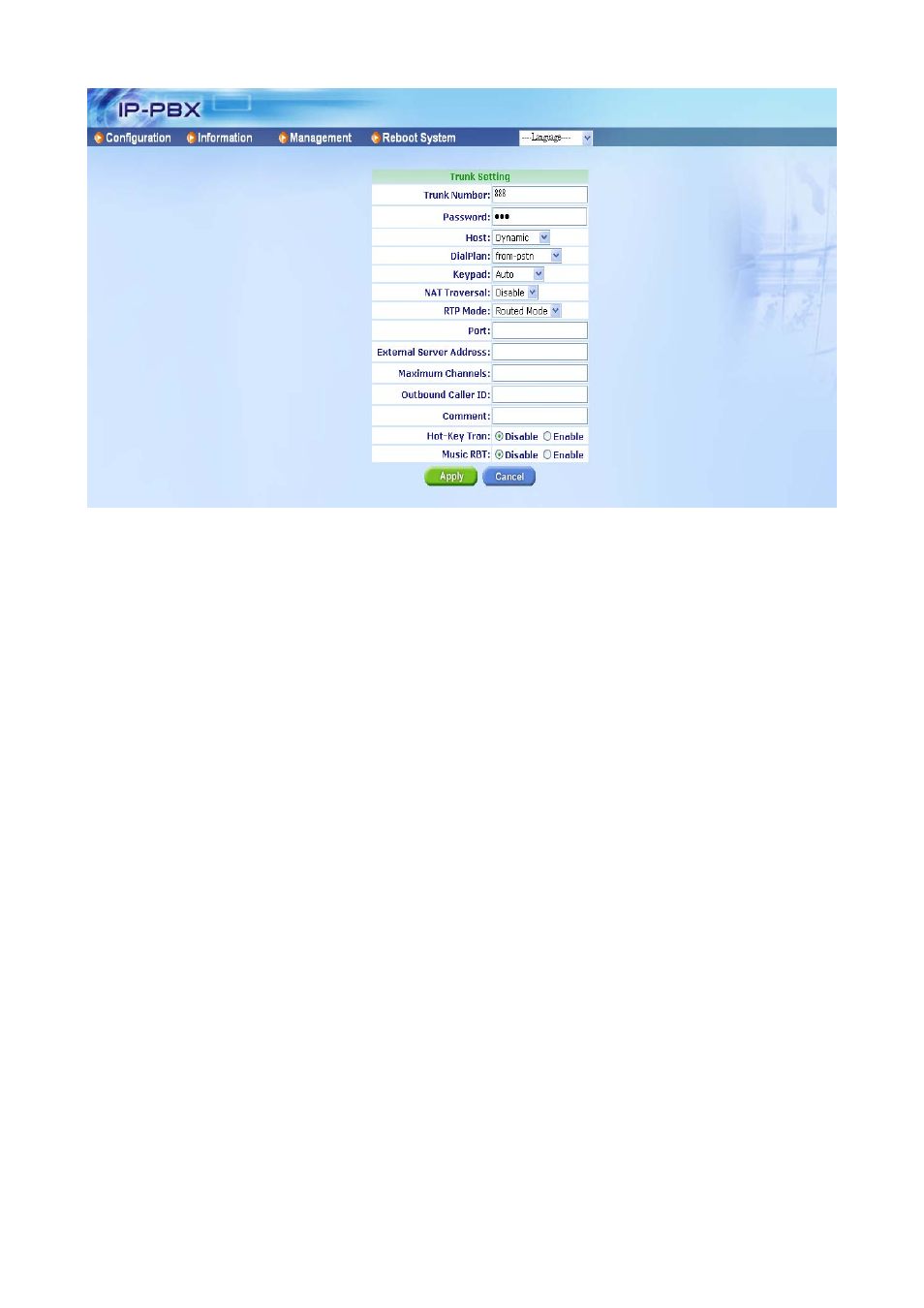Welltech ePBX-100A-128 User Manual
Page 16

16
Trunk Number: Assign the number of Trunk. This number is also the register name for
Trunk device.
Note:
• The Trunk Number can also be a “Trunk ID”. In the Routing Table page, you
should define the destination of prefix route. When you define the prefix route,
you should set the Trunk ID (Trunk Number) in the Trunk page first; then you
could input the correct Trunk ID in the Destination field.
Password: Assign the register password for device to register on ePBX-100A-128.
Host: Setting the Host to Dynamic will require the trunk to register the ePBX-100A-128
so that the ePBX-100A-128 know how to reach the trunk. You can also set the Host to
an IP address or FQDN if you set the Host to [Pre-define]. There will be a field called
[Address] appeared when you choose Host to [Pre-define]. This limits only where you
place calls to, as the user is allowed to place calls from anywhere.
DialPlan: Define the dialing plan for Trunk. It specifies the location of the instruction
used to control what the phone is allowed to do, and what to do with incoming calls for
this Trunk. In this field, you can Choose 6 dial level for Extension, including [from-pstn],
[ext-only], [ext+R1], [ext+R12], [ext+R123], [ext+allroutes]. You can define an
“Outgoing call” record, to a certain route level, as R1, R2…, etc. [from-pstn] is used for
Trunk only. [ext-only] means this subscriber can only call to Extension. [ext+R1] means
the subscriber with such DialPlan can call to Extension and Route Level with R1.
[ext+R12] means the subscriber with such DialPlan can call to Extension and Route
Level with R1 and R2. [ext+R123] means the subscriber with such DialPlan can call to
Extension and Route Level with R1, R2 and R3. [ext+allroutes] means the subscriber
